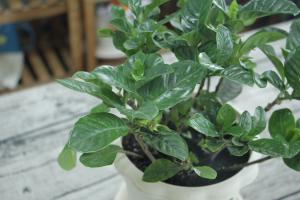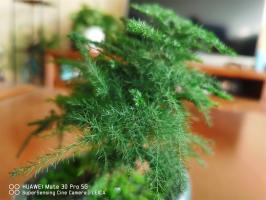Is Pine Tree an Ornamental Plant?
Pine trees are a common sight in many landscapes and offer several benefits, including shade, beauty, and habitat for wildlife. However, do these benefits make pine trees ornamental plants? In this article, we will explore the characteristics of pine trees and determine if they qualify as ornamental plants.
What are Pine Trees?
Pine trees are evergreen coniferous trees that belong to the Pinaceae family. There are over 100 species of pine trees, but some of the most common ones include eastern white pine, red pine, ponderosa pine, and Scots pine. Pine trees are known for their tall, straight trunks, needle-like leaves, and pinecones.
Pine Trees as Ornamental Plants
The question of whether pine trees are ornamental plants depends on one's definition of an ornamental plant. Ornamental plants are those that are grown for their aesthetic value and are used to enhance the beauty of an area. Pine trees, with their impressive heights and conical shapes, are often used as focal points in gardens and landscapes, making them ornamental plants in this sense.
In addition to their aesthetic value, pine trees also offer numerous practical benefits to outdoor spaces. Pine needles and cones can be used for mulch, while the tree's dense canopy provides shade and shelter for wildlife. Pine trees can also help stabilize the soil and prevent erosion, making them valuable additions to landscaping projects.
However, pine trees are not always suitable for all locations. Some species, such as the eastern white pine, are more suited to cool and moist environments and may not thrive in hot and dry climates. Pine trees can also pose maintenance challenges, as their needles and cones can create a mess in high traffic areas.
Uses of Pine Trees
Pine trees have been used for various purposes throughout human history. The trees' wood is soft and lightweight, making it ideal for construction, furniture making, and paper production. Pine oil, which is extracted from the tree's needles, is used in aromatherapy and as a cleaning agent. Pine resin, which can be harvested from the trees, is used to make varnish, adhesives, and even chewing gum.
In addition to their practical uses, pine trees have cultural significance in many societies. In Japan, the practice of shinrin-yoku, or "forest bathing," involves spending time in forests and has been shown to have numerous health benefits. Pine trees are also a prominent symbol of Christmas in many Western cultures.
In Conclusion
Pine trees are versatile and valuable trees that offer both practical benefits and aesthetic appeal. While they may not fit everyone's definition of an ornamental plant, their ability to enhance outdoor spaces and their cultural and practical significance make them an important part of many landscapes. So, the answer to the question "Is Pine Tree an Ornamental Plant?" is up to personal interpretation.

 how many times do yo...
how many times do yo... how many planted tre...
how many planted tre... how many pine trees ...
how many pine trees ... how many pecan trees...
how many pecan trees... how many plants comp...
how many plants comp... how many plants can ...
how many plants can ... how many plants and ...
how many plants and ... how many pepper plan...
how many pepper plan...































